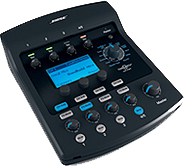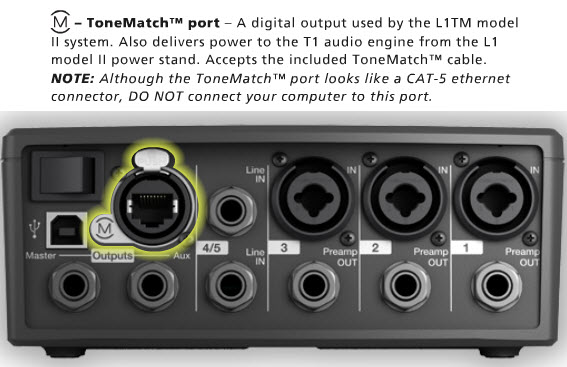Difference between revisions of "Template:T1 Structured Data"
m |
m |
||
| (2 intermediate revisions by the same user not shown) | |||
| Line 6: | Line 6: | ||
|width= n/a | |width= n/a | ||
|depth= n/a | |depth= n/a | ||
| − | |url= | + | |url=/bose/wiki/images/5/58/T1-185.png |
|description=FAQ, documentation, hints and tips for owners of the T1 ToneMatch® Audio Engine | |description=FAQ, documentation, hints and tips for owners of the T1 ToneMatch® Audio Engine | ||
|description2= | |description2= | ||
| Line 27: | Line 27: | ||
<div class="withtechspecs"> | <div class="withtechspecs"> | ||
<div> | <div> | ||
| − | <img itemprop="image" src=" | + | <img itemprop="image" src="/bose/wiki/images/5/58/T1-185.png" alt="ToneMatch - Features"> |
<h5>Technical Specifications</h5> | <h5>Technical Specifications</h5> | ||
<p> | <p> | ||
| Line 65: | Line 65: | ||
<h3>User interface</h3> | <h3>User interface</h3> | ||
<div class="grouped"> | <div class="grouped"> | ||
| − | <img itemprop="image" src=" | + | <img itemprop="image" src="/bose/wiki/images/5/58/T1-185.png" alt="ToneMatch - User Interface" class="floatleft"> |
<ol> | <ol> | ||
<li><p><strong>Input signal/clip LEDs (1-4/5) </strong>— Displays the input signal status in color: Green indicates the presence of an input signal, yellow indicates a signal near clipping and red indicates clipping</p></li> | <li><p><strong>Input signal/clip LEDs (1-4/5) </strong>— Displays the input signal status in color: Green indicates the presence of an input signal, yellow indicates a signal near clipping and red indicates clipping</p></li> | ||
| Line 83: | Line 83: | ||
<h3>Inputs and Outputs</h3> | <h3>Inputs and Outputs</h3> | ||
<div class="grouped"> | <div class="grouped"> | ||
| − | <img itemprop="image" src=" | + | <img itemprop="image" src="/bose/wiki/images/c/c6/T1_ToneMatchOutput.jpg |
| + | " alt="ToneMatch - Inputs and outputs" class="floatleft"> | ||
<ol> | <ol> | ||
<li><p><strong>ToneMatch port </strong>— A digital output used by the L1<sup> </sup>Model 1S and Model II systems. Also delivers power to the T1 audio engine from the L1 Model 1S and Model II power stands. Accepts the included ToneMatch cable</p></li> | <li><p><strong>ToneMatch port </strong>— A digital output used by the L1<sup> </sup>Model 1S and Model II systems. Also delivers power to the T1 audio engine from the L1 Model 1S and Model II power stands. Accepts the included ToneMatch cable</p></li> | ||
Latest revision as of 00:51, 2 December 2018
Bose L1® T1 ToneMatch® Audio Engine
URL [/bose/wiki/images/5/58/T1-185.png /bose/wiki/images/5/58/T1-185.png ]
Release Date: 2007-03-29
Height: inches
Weight: 2.1 pounds
dimensions 8.22" H x 6.52" W x 2.66" D (209 mm H x 165 mm W x 67 mm D)
Power Stand Depth:n/a
Power Stand Width:n/a
Description: FAQ, documentation, hints and tips for owners of the T1 ToneMatch® Audio Engine
Description: T1 ToneMatch® Audio Engine
Features

Technical Specifications
Audio Channels
4
Outputs
2- Master and AUX
A/D and D/A Converters
24-bit
Sample Rate
48 kHz
USB & Interfaces
1.1 protocol, Type A to Type B cable
Dimensions
8.22" H x 6.52" W x 2.66" D (209 mm H x 165 mm W x 67 mm D)
Shipping Weight
2.1 lb (.97 kg)
The T1 ToneMatch® audio engine is a digital multichannel mixer designed for use with Bose® L1® sound systems. It provides four independent channels, over 100 proprietary ToneMatch presets for instruments and microphones and a complete suite of studio-class effects and sound processors.
Proprietary ToneMatch presets optimize L1 system to match the intended natural sound of specific instruments and vocal mics. Over 100 presets are organized into quick-access banks and can be independently assigned to each channel. Free ongoing updates can be downloaded via a USB connection between your computer and the ToneMatch audio engine.
More than 100 proprietary ToneMatch presets for a variety of popular microphones and instruments
Four input channels with independent selection of ToneMatch presets and effects
Proprietary zEQ for precise tone control, plus a complete suite of studio-class effects and processing, such as reverb, delay and modulation
Chromatic tuner
Phantom power
Compatible with any L1 system
(requires T1 power supply for use with L1 Model 1 and L1 Compact systems, and with a PC)
User interface

Input signal/clip LEDs (1-4/5) — Displays the input signal status in color: Green indicates the presence of an input signal, yellow indicates a signal near clipping and red indicates clipping
Trim controls (1-4/5) — Adjust the input sensitivity for the respective channel
Phantom power switch — Applies +48V power to input channels 1-3. A red LED indicates that phantom power is on
Display — Provides function menus and system status information
T1 rotary selector — Allows access to both global and channel related parameters, which are adjusted using the editing controls
Editing controls — These three rotary/push-button controls allow you to select or adjust items/values appearing on the display
CH edit buttons (1-4/5) — Select the channel you want to modify using the T1 rotary selector and display-related editing controls
FX mute buttons (1-4/5) — Bypass the Mod, Delay and Reverb effects on the selected channel
Volume controls (1-4/5) — Adjust the volume level for the respective channel
Mute buttons (1-4/5) — Silence the audio output for the respective channel
MASTER volume control — Adjusts the overall output level
Inputs and Outputs

ToneMatch port — A digital output used by the L1 Model 1S and Model II systems. Also delivers power to the T1 audio engine from the L1 Model 1S and Model II power stands. Accepts the included ToneMatch cable
Power switch — Turns the T1 audio engine on or off
IN — Analog input channels 1-3. Accepts XLR balanced cables for microphones, or ¼" TRS balanced or TS unbalanced cables for high-impedance inputs such as guitars
USB port — A USB interface that allows you to connect the T1 to your computer. This feature enables you to stream audio to/from your computer, update the T1 and back up performance scenes
Preamp OUT — Preamp outputs for channels 1-3. Accepts ¼" TRS balanced or TS unbalanced cables
Master output — User-definable analog output. Can be configured for a pre- or post-master volume analog output. Accepts ¼" TRS balanced or TS unbalanced cables
Aux output — User-definable analog output. Can be configured for a pre-fader, post-EQ, and effects or post fader output. Accepts ¼" TRS balanced or TS unbalanced cables
Line IN — Analog input channels 4/5. Accepts ¼" TRS balanced or TS unbalanced cables for line-level inputs. Can be used for stereo input signals